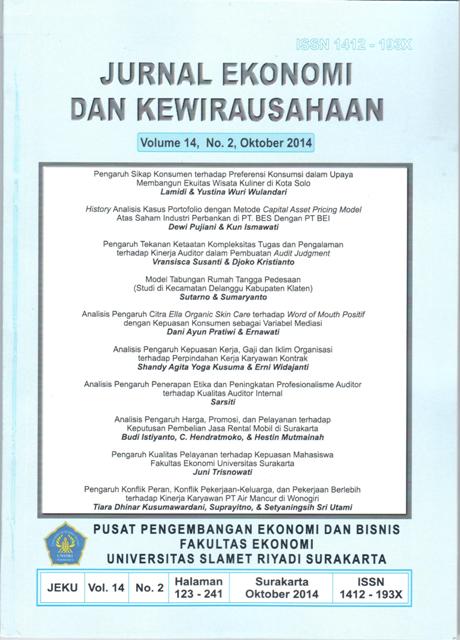HISTORY ANALISIS KASUS PORTOFOLIO DENGAN METODE CAPITAL ASSET PRICING MODEL ATAS SAHAM INDUSTRI PERBANKAN DI PT. BES DENGAN PT BEI
Abstract
This research aims at: 1) in order to apply the concept of Capital Asset Pricing Model (CAPM) in the investment banking industry shares that go public in the company Surabaya Stock Exchange; 2) to find out which stocks can form optimal portfolio. Modern portfolio theory was first introduced formally by Dr. Harry M. Markowitz in the 1950s. Basically this portfolio theory is a theoretical framework for selecting the optimum portfolio-portfolio systematically. The literal sense is a set of portfolio investment opportunities. Methods used in this study is CAPM. As defined in the CAPM beta (β), so companies that have operating leverage is defined as a company that has high risk and the beta subunits. The main results in this study is there is a risk that the bank ' s shares as 0,733 with the expected profit rate of 3,45%; BNI had a level of risk with the level of profits that 0,309 expected 16,70%; Bank CIC International have risk-level profit 0,111 expected 6,40%; Bank Danamon has the risk level of profit 0,350 expected 19,33%; BII has the risk level of profit 0,454 expected 7,41%. The conclusion is a bank Danamon shares the least risk. Keywords: portfolio, CAPM, investment, risk, expectedDownloads
Published
2015-01-07
Issue
Section
Artikel
License
Authors who publish this journal agree to the following terms:
- Authors retain copyright and grant the journal right of first publication with the work simultaneously licensed under a Creative Commons Attribution License that allows others to share the work with an acknowledgement of the work's authorship and initial publication in this journal.
- Authors can separately make additional contractual arrangements for non-exclusive distribution published by the journal (e.g., publish it in a book), with an acknowledgement of its initial publication in this journal.
- Authors are allowed and encouraged to send their work via online (e.g., in the institutional repositories or their website) after published by the journal.









